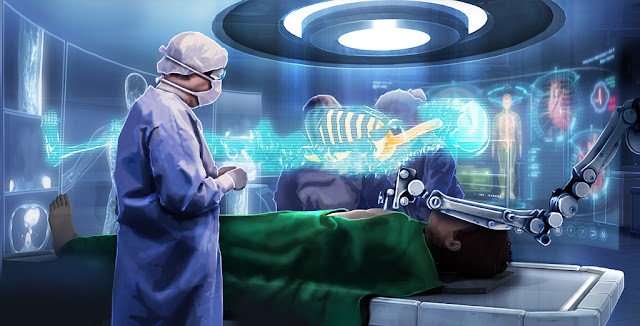A Look at Augmented Reality
Magic Leap, the still-in-stealth-mode company developing an augmented-reality headset, announced that it has raised $502 million in Series D equity funding, led by Singapore investment firm Temasek Holdings.
The funding brings Magic Leap, founded in 2011, to more than $1.8 billion raised to date — and the well-funded company has yet to publicly reveal what it’s working on.
Magic Leap is planning to ship an initial version of its headset — smaller than VR headsets like Oculus Rift but bigger than a pair of glasses — within the next six months, priced at $1,500-$2,000.
AR grew in popularity with the launch of mobile gaming sensation Pokemon Go and goofy Snapchat filters. But major tech companies—including Google, Facebook, and Apple—are now providing platforms and tools for developing AR applications. Beyond gaming and entertainment, the bigger promise for AR, which is estimated to become a $49 billion market by 2021, is for the professional hands-on workforce: Access to information and assistance on the go can make a huge difference in speed and efficiency.
General Electric is one of several companies quietly testing AR technology as a method for improving productivity and reducing errors. In the case of the wind turbine electrical cabinet, a first-time use of AR glasses by the operator has resulted in a 34 percent speed gain. This trend is finding its way into other large companies across different industries, driving noticeable improvements in manufacturing, warehouse management, equipment maintenance, design, and more.
Augmented-reality headsets have long promised to turn unskilled tinkerers into instant experts. Whether you want to change the oil in your car or cut an onion so it doesn’t make you cry, a headset or tablet will paint your surroundings with instructions guiding you like an experienced pro, patiently correcting any missteps along the way.
IOXP in Mannheim, Germany, can take a single video of someone correctly performing a task – and then with the help of artificial intelligence automatically convert it into an AR tutorial.
“The goal is that anyone who wants to fix something at home can download a tutorial to their AR device that shows them how to do so,” says Didier Stricker at the German Research Centre for Artificial Intelligence, and one of the co-founders of IOXP. There are already how-to videos on YouTube for every conceivable thing you might want to learn, but they won’t tell you when you’re doing it wrong.
To create an AR tutorial using the IOXP system, first you use a standard camera to film someone completing a task. This could be changing the oil in a car, installing a boiler or doing a cross-stitch. Then a host of computer-vision algorithms are set loose on the video to separate it into comprehensible chunks: detecting a person’s hands and what they are doing, recognising different objects, and so on. From this, the system generates a step-by-step electronic manual detailing how to do the task. Finally, that’s converted into an AR version.
Best of all, the AR instruction manual starts itself as soon as it recognises the task in front of you. For example, if an engineer goes to perform some basic maintenance on a machine, the camera on their AR headset will automatically identify the machine in front of it.
“You then see the hands of the expert in front of you showing you what to do,” says Stricker. If you grasp the wrong dial or object, your hands turn red and the system replays the action that you are meant to be performing, highlighting your hands, relevant knobs, dials, parts, all within an accuracy of half a centimetre.
Apple CEO Tim Cook thinks augmented reality is going to be something big, a fairly simple claim to make thanks to the company’s recent inclusion of its AR tech into every Apple device capable of updating to iOS 11. But when we talk about AR, the natural terminus isn’t the smartphone’s screen, but rather a perfectly immersive pair of AR glasses that have yet to come. Speaking to The Independent, Cook says the technology to create an AR headset in a “quality way” just isn’t possible yet, but when it is, Apple will be the best.
We don’t give a rat’s about being first, we want to be the best, and give people a great experience. But now anything you would see on the market any time soon would not be something any of us would be satisfied with. Nor do I think the vast majority of people would be satisfied.”





0 comments:
Post a Comment